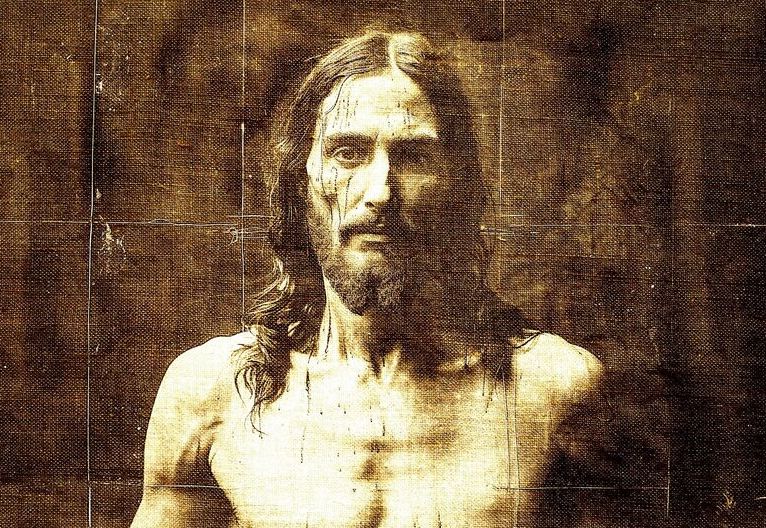The Shroud of Turin — the burial relic in which Jesus Christ is supposed to have been wrapped after his crucifixion — has long been a source of fascination and contention. The cloth, which appears to bear the imprint of Christ’s body and is duly revered, was denounced by John Calvin as superstition during the Protestant Reformation. In the Eighties, a radiocarbon dating led to the widespread consensus that the shroud was medieval forgery.
But as of this week, Italian researchers have found using the latest technology that the cloth could in fact date from the life of Christ 2000 years ago, and could really contain a miraculous impression of his body and face. They conducted the study using a cutting-edge X-ray technique, the new imaging from which has since been reconstructed with AI to produce a highly realistic image of what Christ may have looked like.
Perhaps just as fascinating as the discovery itself is the fact that it disrupts the widely accepted narrative of technological progress: that, the more science advances, the more apparently supernatural phenomena will be explained away. In this view, technology is an inherently disenchanting force that will chase away the last fairies from the “great enchanted garden”. The revelations of Turin suggest the opposite. Instead of furthering cynicism, innovation has opened us to the possibility of miracles once again.
In one of his poems, John Keats described “unweav[ing] a rainbow”: breaking down all mysterious phenomena into rational explanations, and in doing so dispelling their magic. During the Enlightenment, this took the form of the historical-critical method, which exploited contemporary archeological and textual evidence to discredit Biblical narratives as they had been accepted in the Christian tradition. Biology and physics later became methods to cast doubt on the existence of God altogether. The conviction that all religious belief would be eliminated by scientific discovery reached its peak in the New Atheism of the 2000s, with Richard Dawkins using the phrase “unweaving the rainbow” to describe his confidence in the profaning power of science.
This narrative has not gone unchallenged. For years the evolutionary biologist and philosopher Rupert Sheldrake has argued that scientific experimentation may reveal the universe to be far more mysterious than we once thought. It is the materialist dogma of modern scientific institutions, he says, which insists on explaining all of existence in the terms of chemistry and physics.
In The Science Delusion, Sheldrake explored a range of unexplainable phenomena including inedia (extreme fasting) among saints and holy men in India and Europe. For them to survive months on end without food and water should have been impossible. Yet overwhelming evidence found that they had lived in near-perfect health, revealing the existence of some other sustenance or energy at work. The deeper we delve into scientific experimentation, Sheldrake suggests, the more plausible supernatural occurrences become.
As technology develops and comes to realise its own limits, it could be that we are increasingly forced to challenge the materialist dogma of which Sheldrake has been so critical. If the Shroud of Turin discovery is anything to go by — which it may not be, scientists having wrangled over the question of its authenticity for decades now — scientific developments may force us to confront the insoluble mysteries of faith. Similarly, academic historians are now moving beyond the cynical approach of the historical-critical method. The Yale professor Carlos Eire’s recent book They Flew, for example, surveys previously overlooked evidence of levitating saints and other unexplainable phenomena which were long dismissed as superstition.
Could it be, then, that technological progress is not the disenchanting force that we always thought it would be? Pope Francis certainly seems to think so. Earlier this year, he warned of the need to regulate the “discernment of alleged supernatural phenomena” following a surge of new reports of science-defying relics and apparitions spreading online. The advent of technology in the Catholic Church has led to more, not fewer, reports of supernatural encounters.
While the Pope is right to raise concerns that this might lead to a rise of spiritual misinformation, our encounters with an ever-broadening sphere of human knowledge may erode the certainties of materialism. The Turin discovery, though not the final word, is an indication that we are as uncertain about where scientific discovery leads as in any other endeavour. Where new technologies seem to surpass our understanding, the rainbow may not be unweaved so easily.










Join the discussion
Join like minded readers that support our journalism by becoming a paid subscriber
To join the discussion in the comments, become a paid subscriber.
Join like minded readers that support our journalism, read unlimited articles and enjoy other subscriber-only benefits.
Subscribe